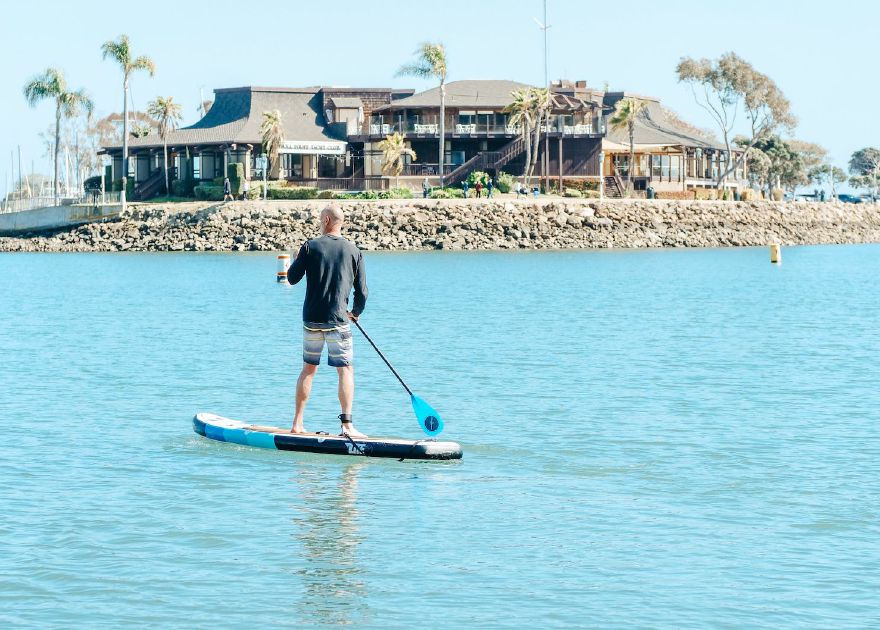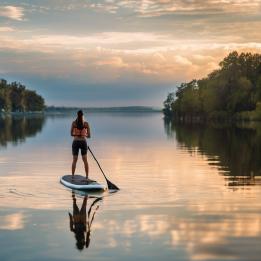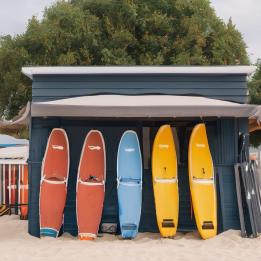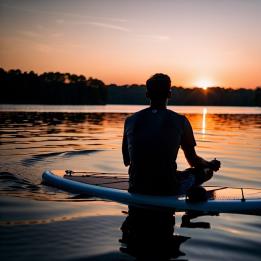Sup with Confidence - The Non-Swimmer's Safety Checklist

Whether you’re an experience stand-up paddleboarder or just starting out, safety should always be your top priority on the water. For those who don’t have strong swimming skills, taking the proper precautions is especially important. This non-swimmer checklist for SUP boarders outlines the key steps non-swimmers should take to SUP with confidence and peace of mind.
Review each point carefully before heading out on your next paddling adventure. While no checklist can guarantee safety, being well-prepared and vigilant greatly reduces the risks involved with stand-up paddleboarding as a beginner. Continue reading for a detailed guide to safely enjoying SUP as a non-swimmer.
Non-Swimmer Checklist for SUP
- Choose the Right Equipment: Only use boards suitable for beginners, which are typically wider and more stable. Ensure your personal flotation device (PFD) fits well and that you’re comfortable wearing it.
- Always Use a Leash: This ensures your SUP doesn’t drift away from you if you fall. Your leash should be securely attached to your ankle or calf.
- Start in Shallow Waters: This will provide you with the opportunity to get used to balancing the SUP board while still standing firm.
- Stick to Known and Calm Waters: Avoid taking your SUP board into rough or unfamiliar waters. Stick to calm lakes, slow-moving rivers, or areas of the sea with little current or surf.
- Avoid Paddling Alone: Especially for non-swimmers, paddling with others can be a crucial safety measure.
- Take a Course: Consider taking a SUP course that can guide beginners through the basics and safety of the sport.
- Monitor the Weather: Always check the weather forecast before you head out on the water. Wind, high waves or a sudden storm can make SUP more challenging and dangerous.
- Practice Self-Rescue: Learn and practise how to climb back onto your board from the water, even if you’re just paddling in shallow water.
- Stay Close to the Shore: You may feel a sense of security knowing that the shore is within your reach.
- Start Swimming Lessons: Boost your confidence and safety by enrolling in swimming lessons until you’re comfortable around water.
- Have an Emergency Plan: Make sure you know who to call and what to do if things go wrong.
Conclusion
Stand-up paddleboarding can be an incredibly rewarding sport, even for those without strong swimming abilities. As long as you educate yourself, choose beginner-friendly equipment, stick to calm waters, and take proper precautions, non-swimmers can safely enjoy all the fun and fitness benefits SUP has to offer.
Be sure to review this non-swimmer’s SUP safety checklist before every paddling session. With the right preparation and smart decisions, you can get out on the water with confidence. As your skills improve over time, continue being cautious and never underestimate the power of the water. Most importantly, prioritise fun and don’t let fear hold you back from learning an amazing new sport!



